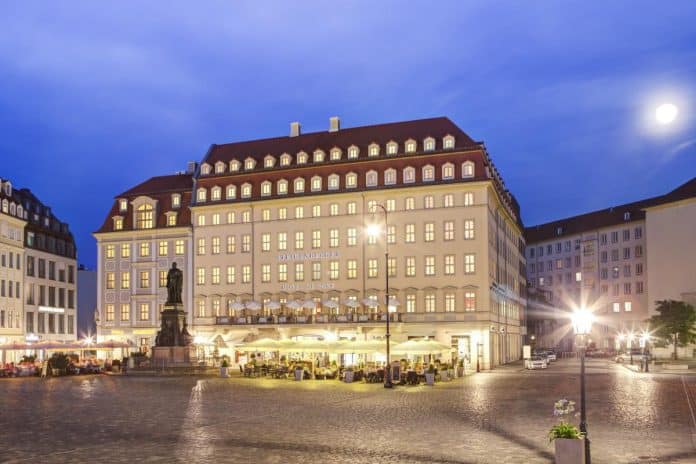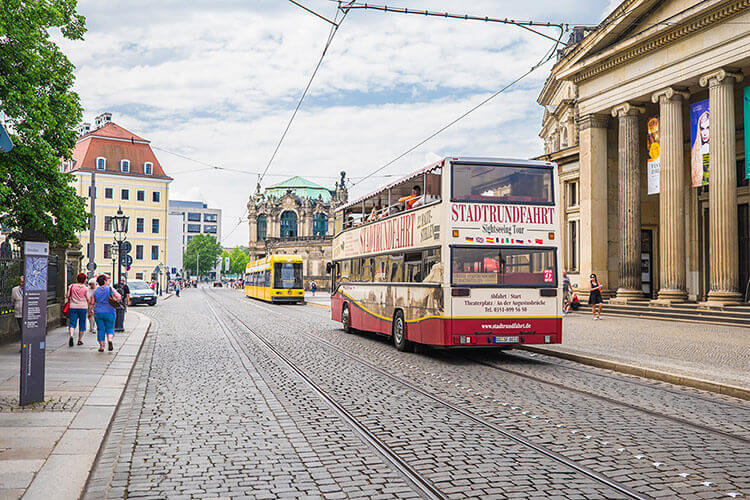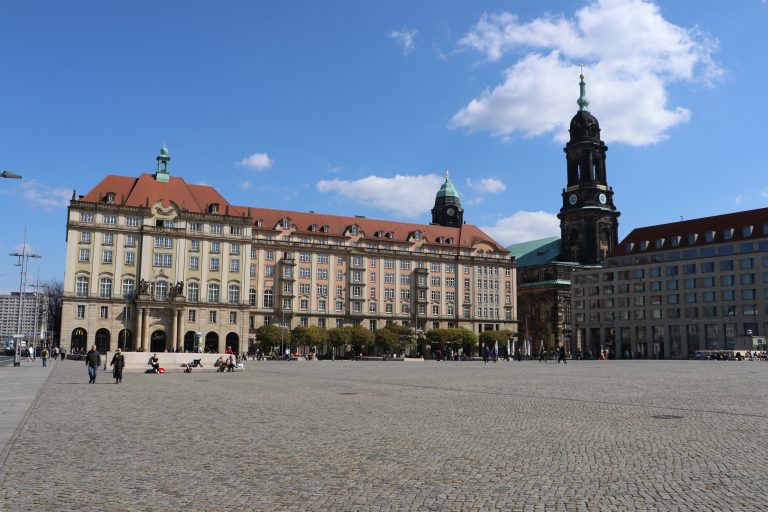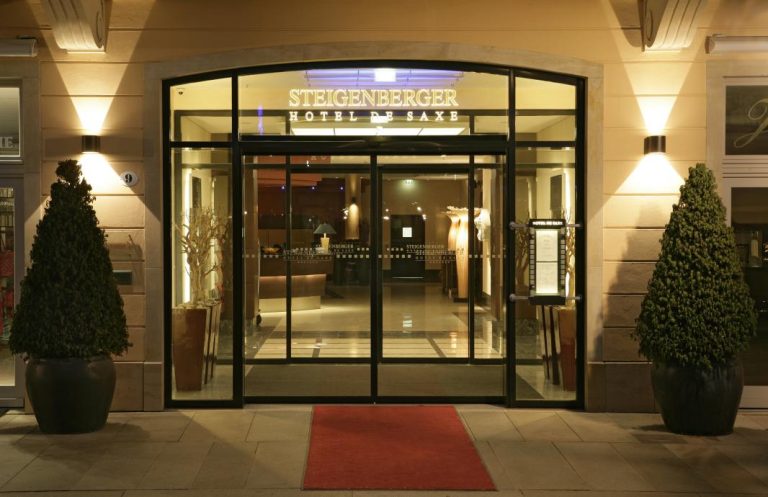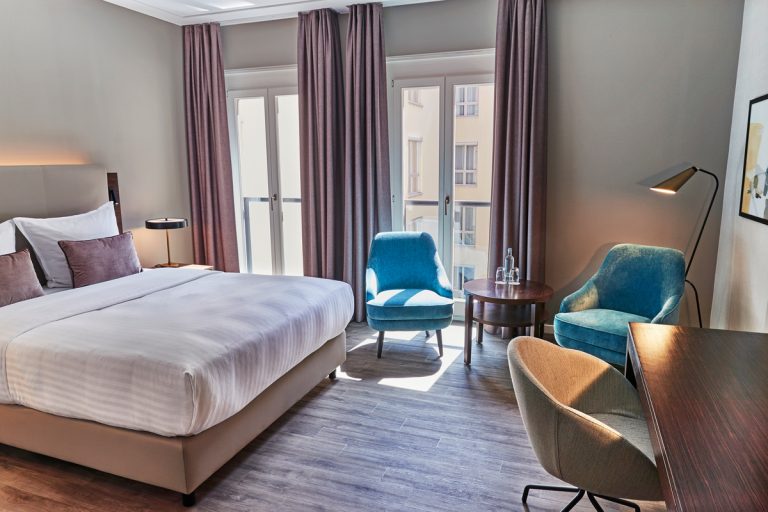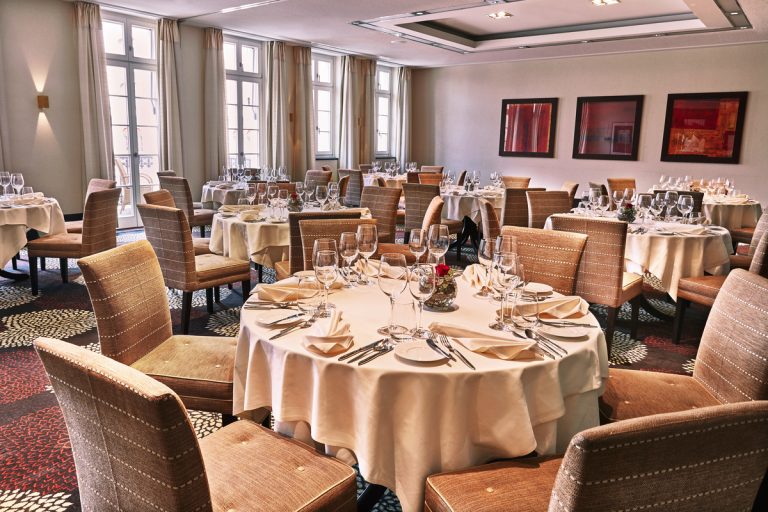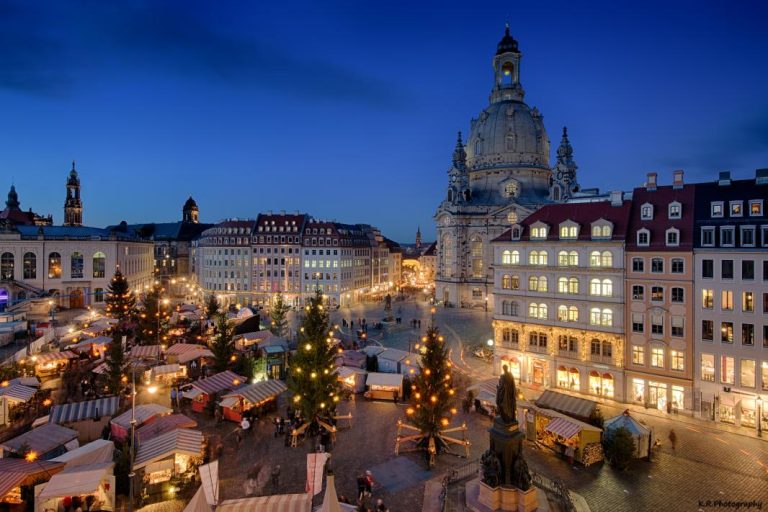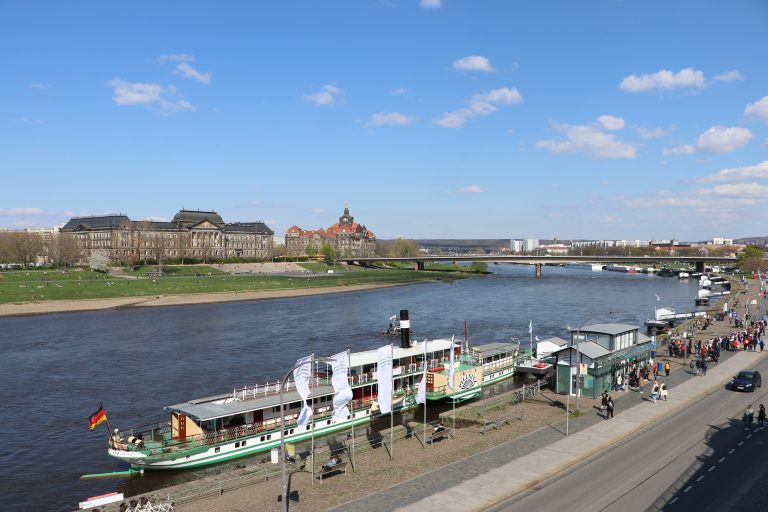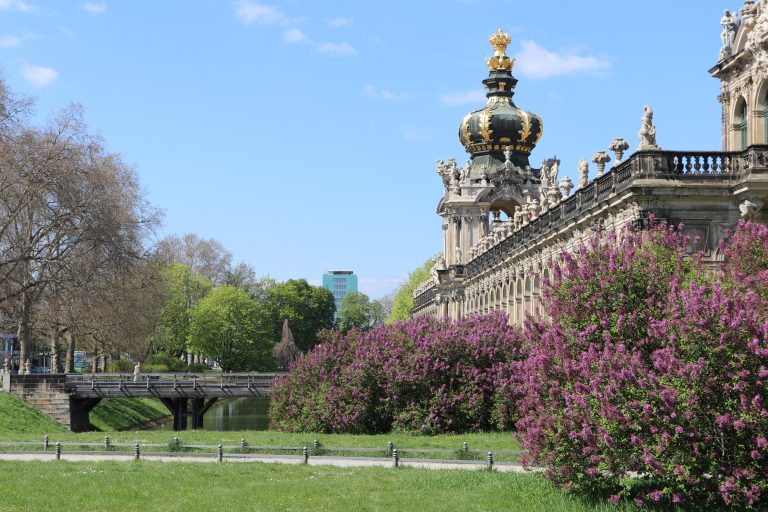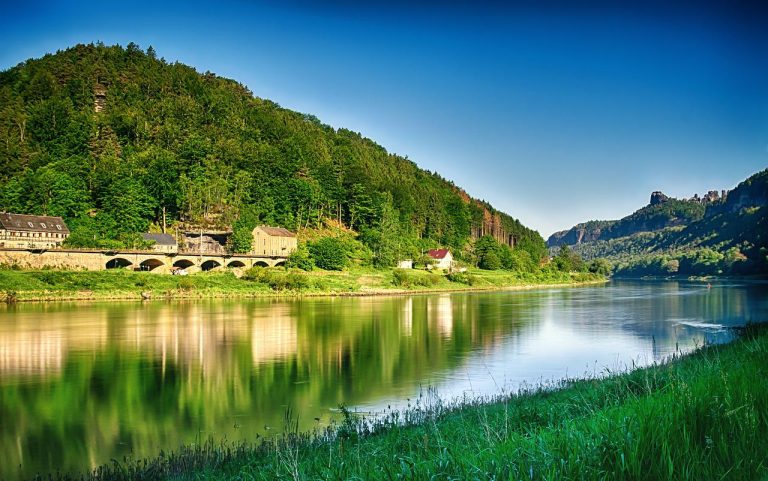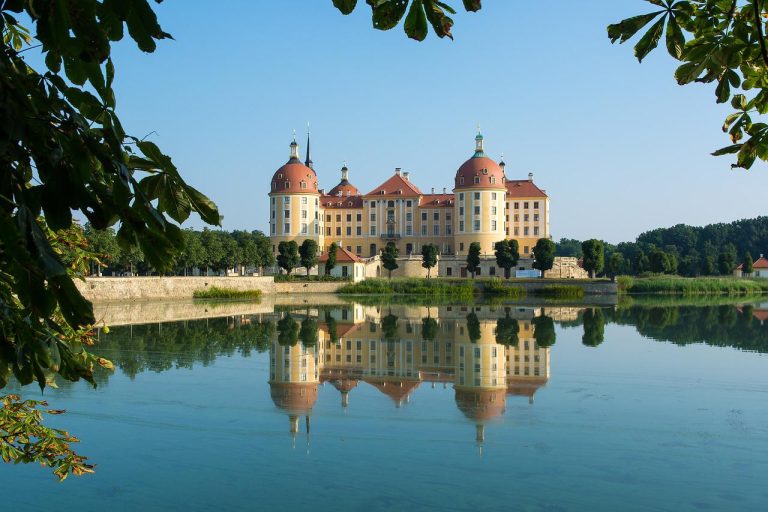Having had one visit to Prague cancelled back in 2020 due to those pesky Covid travel restrictions I was super excited to finally arrive in the Czech Republic capital this spring. Now I knew I was going to enjoy this fabled city with its spectacular buildings, beautiful bridges, and bustling lively nightlife but deep inside I knew there was going to be so much more to discover.
Arriving on a flight and then transiting through Prague’s modern Vaclav Havel Airport is easy with buses, trams, and trains whisking tourists straight into the heart of the city in about 35 minutes. I however took the option of a taxi.
Thankfully the journey is not on high-speed roads given that my taxi driver spent most of his time texting, preening his hair, adjusting his shades, and chatting with his Czech mates.
Prague Planning
Despite this somewhat scary initiation to local life, I dusted myself down and arrived at my hotel. The choice of accommodation in Prague ranges from hostels to 5-star deluxe so there is something for every budget. I stayed at Miss Sophie’s Downtown Hotel. A simple well-run, ideally located hotel catering for those looking for a clean and comfortable base with good service, a funky bar, and a nice breakfast.
One of the many reasons Prague is so popular is due to the sheer number of attractions the city has to offer. There are 280 museums with so many set amongst incredible architecture and close to the stunning River Vltava which flows through its heart.
One thing I would suggest is a plan especially if you are only in town for a couple of days. Decide upon the key places and sights that you want to visit – mark them on your map and then work out how you are going to get from A to B.
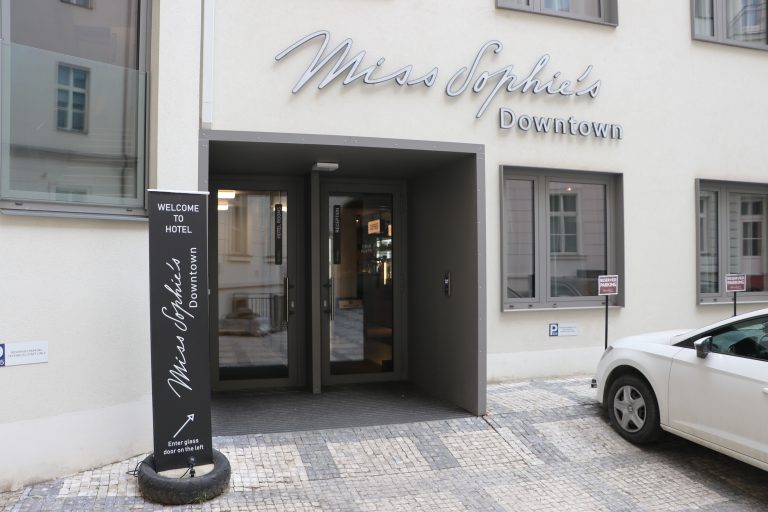
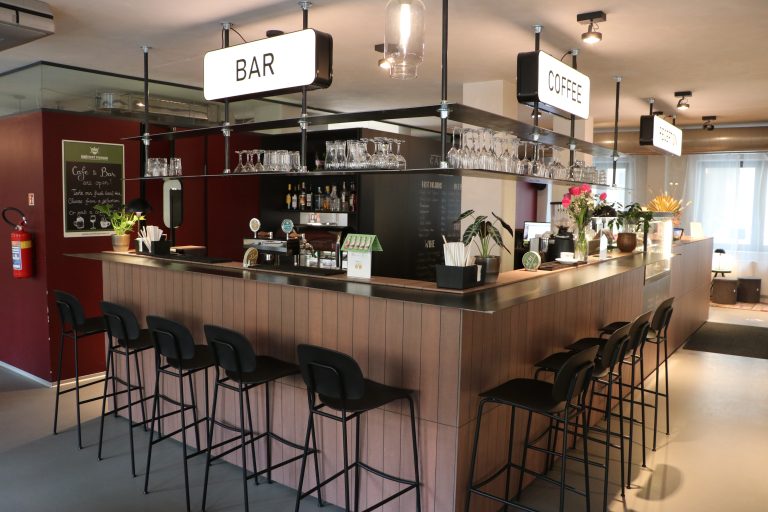
Getting Around
Prague is a relatively compact city yet as you would expect there are several ways to get around with the four easiest – metro, tram, bus and my favourite, walking.
To cover all options with one simple ticket, you should purchase a 1-day, 3-day, or 1-month travel ticket that permits access to all of these options. Tickets are best purchased from metro stations, newsagents, information centres, and from the orange/yellow ticket machines at major tram and bus stops.
Getting about on the Metro is simple in that there are just three coloured lines, red, yellow, and green. All of the stations that I experienced were clean and safe, all had long escalators and the signage was easy to understand. The Metro is also the best way to cover longer distances for those attractions on the edge of the city.
The Tram network which runs both day and night is very popular for the locals however for tourists it can be a little confusing at first. However, after a little trial and error, you will soon get the hang of it. Trams can take you pretty much anywhere you want to go in the city.
The city has a wide network of buses, although most of these serve the outer parts of the city. The two most common bus services are the one from Prague Airport to the Nádraží Veleslavín metro station (bus 119) and the one from Nádraží Holešovice metro station to Prague Zoo (bus 112).
My preferred method of transport around Prague is on foot. There are a heap of walking tours available to buy with most starting at the Astronomical clock in the Old Town Square. Some are themed such as art and history, beer, or even ghost tours. However, if you have the time get yourself a decent map that clearly shows the road names, especially in the Old Town area, and do it yourself. Walking the city is the way to truly understand and discover the authentic Prague.
Having experienced “Lime” Scooters when I visited Vienna a few years back I was excited to see that Prague also had this means of transport. With the Lime app still on my phone I found the nearest scooter and took to the streets only to be seriously underwhelmed by the whole experience. For the sake of pedestrians’ safety, scooters are banned from the pavements so you can only use them on the roads, many of which are cobbled which naturally leads to a rather sore behind. Furthermore, restrictions have recently been brought in and there are now many key historical areas of the city and in particular, the Old Town where scooters are not permitted. Whilst I love the clean eco-friendly idea – at present, it just does not work here in Prague.
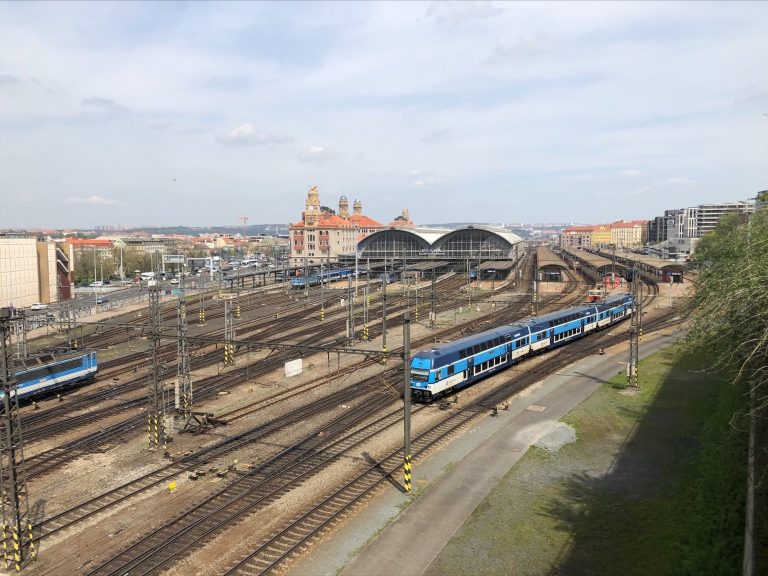
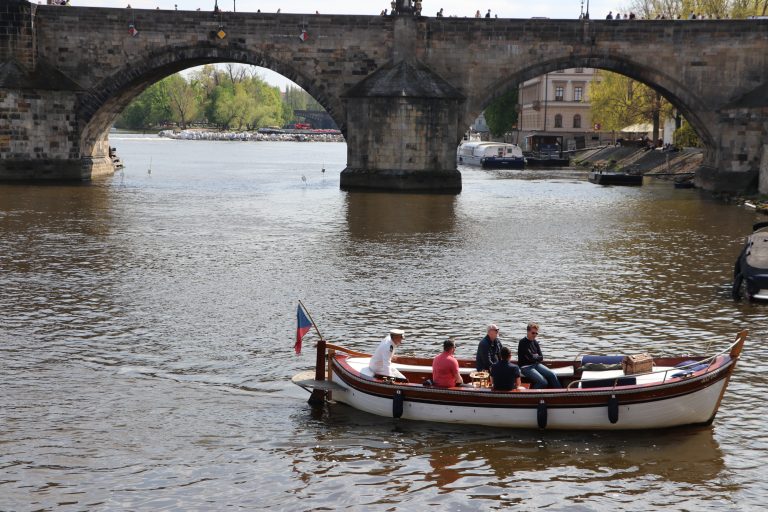
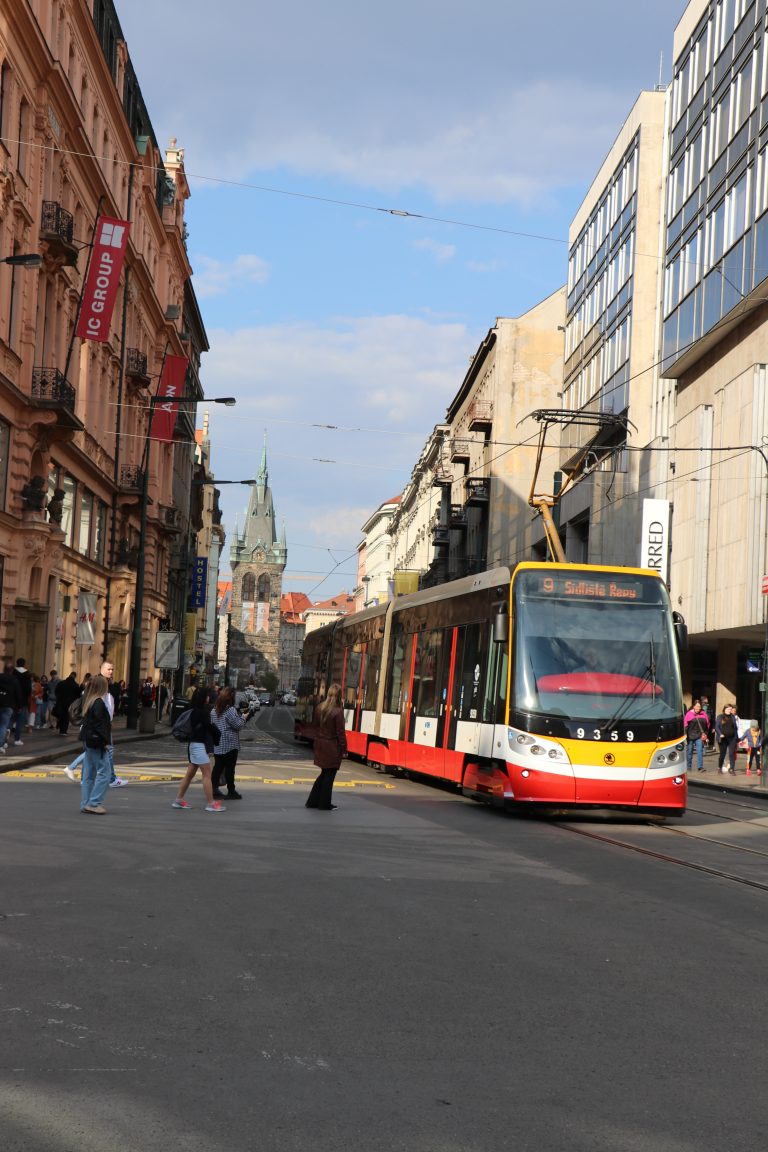

Czech Currency
Many expect Prague and indeed the Czech Republic to use the Euro currency. It does as a secondary option although this is far less favourable, in terms of rate than the Czech Koruna.
In nearly all shops, bars, and restaurants they will take cards at which time they will give you the option of paying in Czech Koruna or Euro – select the Czech Koruna.
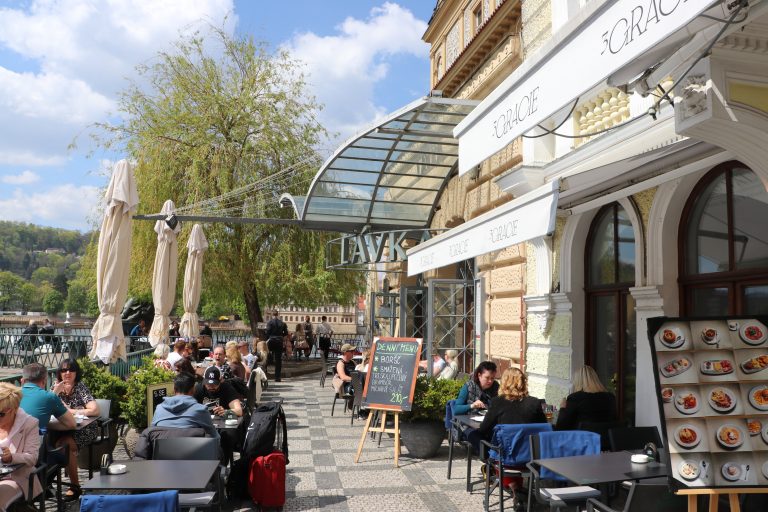
Prague Coolpass
The most cost-effective way to visit all of the key attractions in Prague is to purchase a Prague Coolpass.
This easy-to-use tool can be downloaded as an app and flashed for free entry at over 70 key sights and attractions around the city. It also provides a range of discounts on attractions, tours, cruises, shows, and dining options.
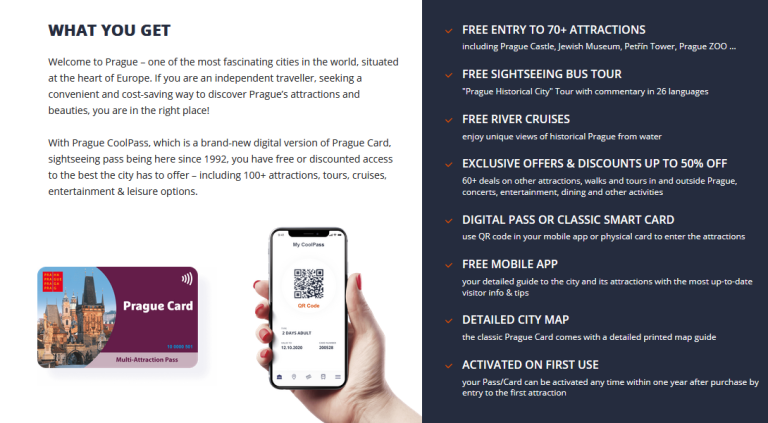
Prague Castle
Without a doubt, the star attraction of any first-time visit is to Prague Castle. Founded in 880AD it today dominates the skyline overlooking the Lesser Town and River Vltava.
The castle is enormous and covers an area of 45 hectares within which is a maze of buildings centred around three great courtyards. The most popular building and well worth a tour is the St. Vitus Cathedral however you are spoilt for choice as there is also the Old Royal Palace, St. George’s Basilica, Golden Lane with the Daliborka Tower, the Powder Tower, and Rosenberg Palace.
Visitors can enter the main castle complex for free however for a fee you can take a pre-organized Prague Castle tour thus avoiding the queues. You could also purchase a self-guided ticket where you discover the castle at your own pace. Some tours include boat trips and others that involve a visit at night which showcases this attraction in a completely different light.
Prague Castle is the official residence and office of the President of the Czech Republic and every day at noon, you can, along with the crowds, witness the changing of the guard.

John Lennon Wall
Just a stone’s throw from Prague Castle in the Lesser Town is the John Lennon Wall. I visited this popular attraction and felt as if I was in some leafy London suburb given how quiet and relaxed the area was. It was back in 1980 soon after the assassination of John Lennon that graffiti and lyrics started to appear along this small stretch of wall that sits alongside manicured gardens and a small park.
Today it is a place not only to remember one of the Beatles’ finest, but also a place for young Czechs to share their political views and other grievances on our world today.
I loved this peaceful corner of Prague and would recommend a stop at the Café De Paris which is almost next door to the wall. An elegant and stylish Café with superb service and wonderful coffee although rumour has it, the gin is rather good here too!
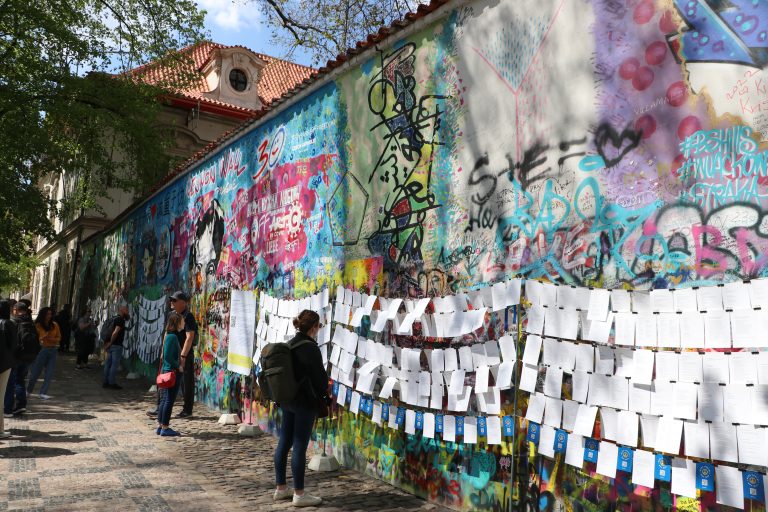
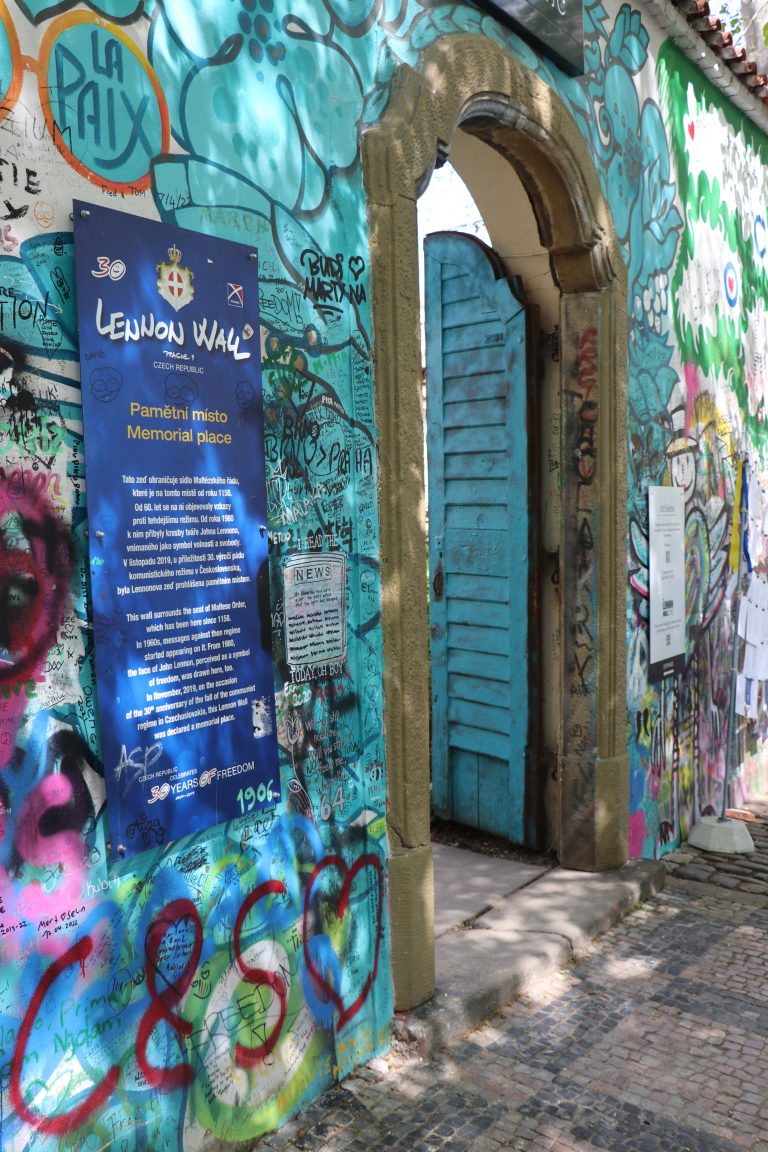
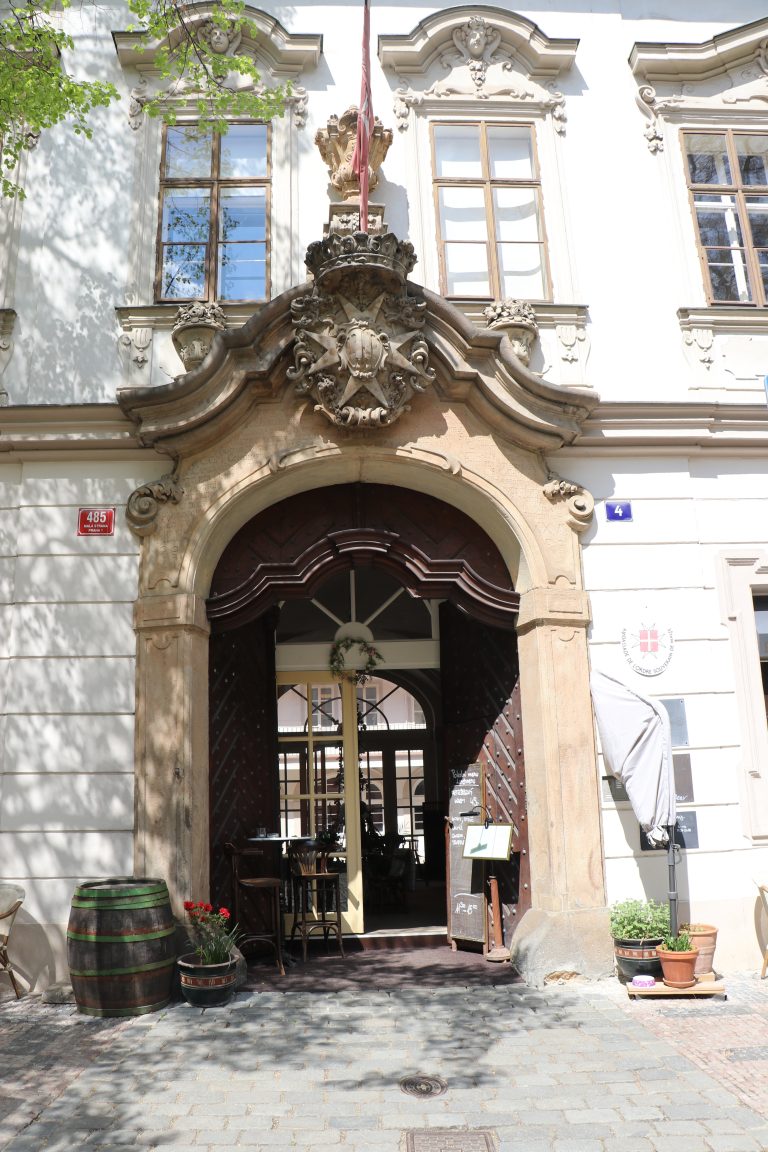
The Charles Bridge
Today the famous Charles Bridge in Prague is pedestrianized and has at either end two towers, the Old Town Bridge Tower and the Lesser Town Bridge Tower which can be climbed for more impressive views of the city.
Late one morning I walked across, accompanied by hordes of tourists all keen to take that 21st-century phenomenon, the selfie. I averted my gaze and enjoyed the many stalls with vendors selling small handmade souvenirs, and stylish paintings of the Prague skyline while others offered to paint your portrait. Halfway across the bridge was an old-time swing quartet ensuring that with a pep in my step, I made my way across.
In the Old Town on the banks of the river, I would recommend a daytime stop at Club Lavka where you can relax on a little circular riverside alfresco terrace overlooking the bridge. The sun was shining, the waiters were in overdrive and the 75 Koruna or about 3 euros I paid for a Café Latte was worth…well every Koruna.
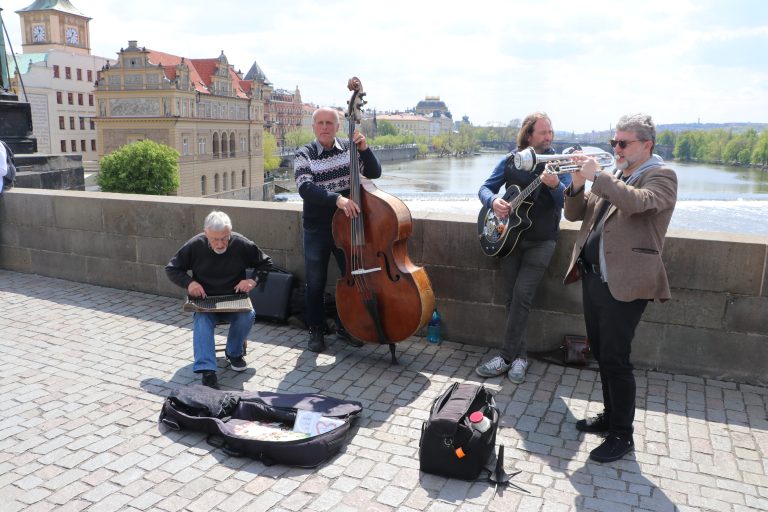
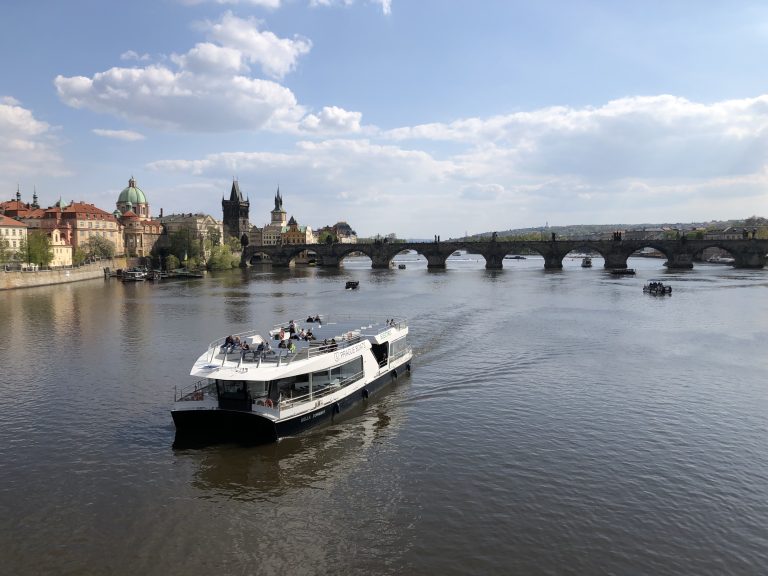
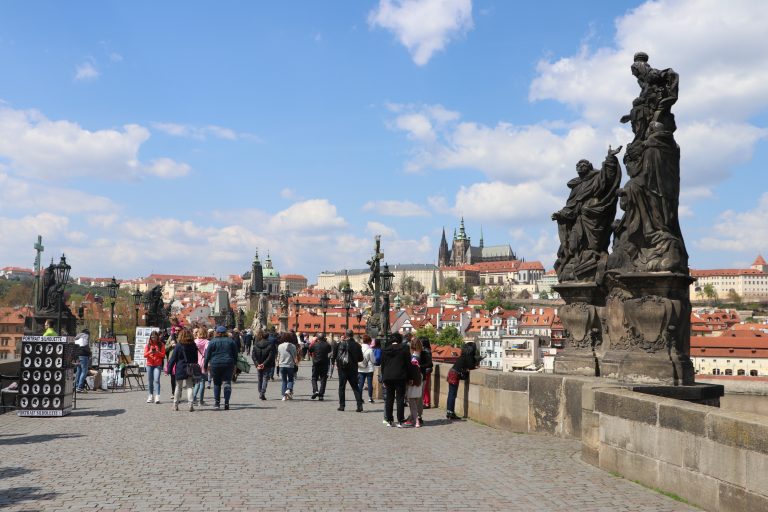
The Old Jewish Cemetary
Located in Josefov you will find the Jewish Quarter and Old Cemetery which dates back to the early fifteenth century.
Here you can find six synagogues, a Jewish Ceremonial Hall, and the famous Old Jewish Cemetery. You can queue to enter or purchase tickets in the nearby synagogues.
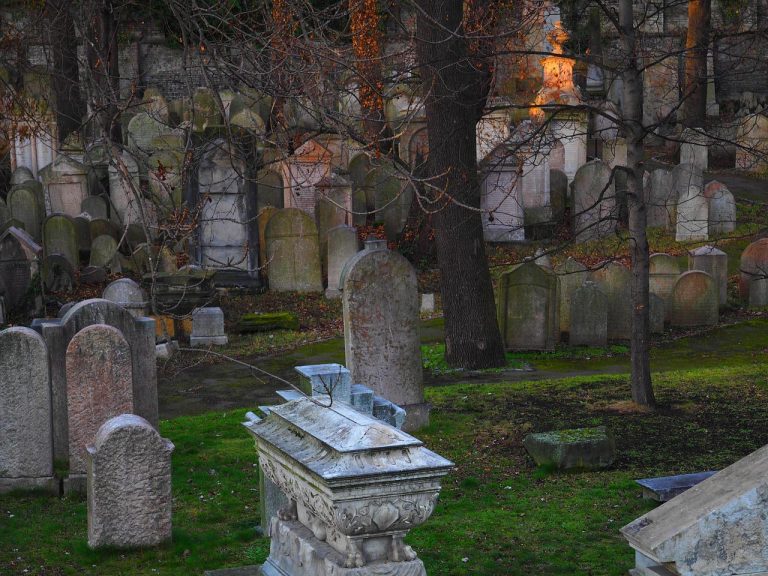
A Prague River Cruise
As you would expect one of the top things to do in Prague is to get out on the River Vltava. Enjoying the slow pace of life as you meander under bridge after bridge, while taking in endless majestic views of the city, is a delight.
My advice is to check the weather and decide exactly what you want as there are lots of different themes of cruise with prices starting from about £25 per person although if you have your Prague Coolpass then there is a better deal to be had.
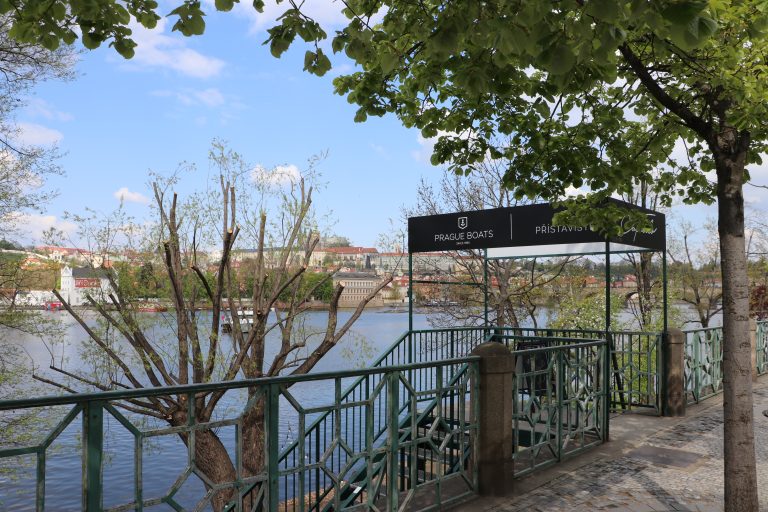
The Old Town Square & Astronomical Clock
No trip to Prague is complete without a visit to the Old Town Square and its adjoining narrow cobbled streets full of history and intrigue. All around are a variety of quirky shops, alfresco restaurants, and some cool pubs serving up delicious local beers.
As I wandered around taking in the atmosphere I was drawn to a crowd gathering on the hour at the corner of the square. It is here that one of Prague’s most famous and perhaps overhyped sights is located – the world’s oldest operating astronomical clock.
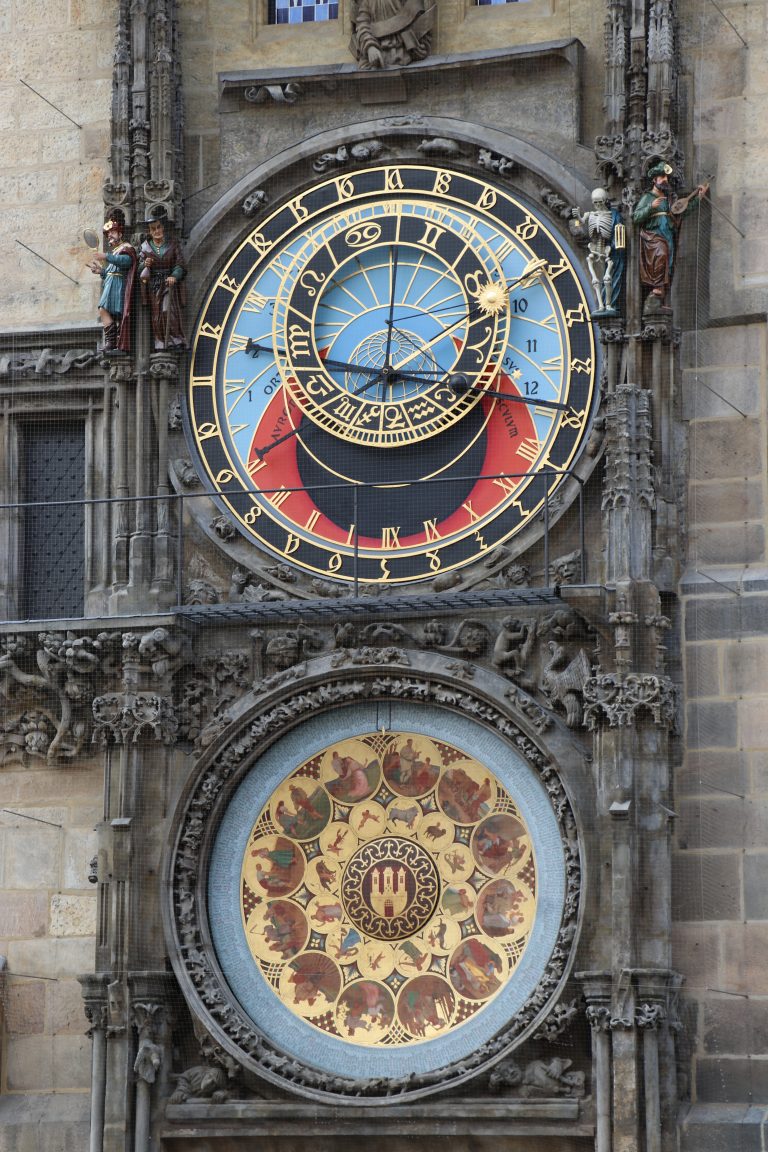
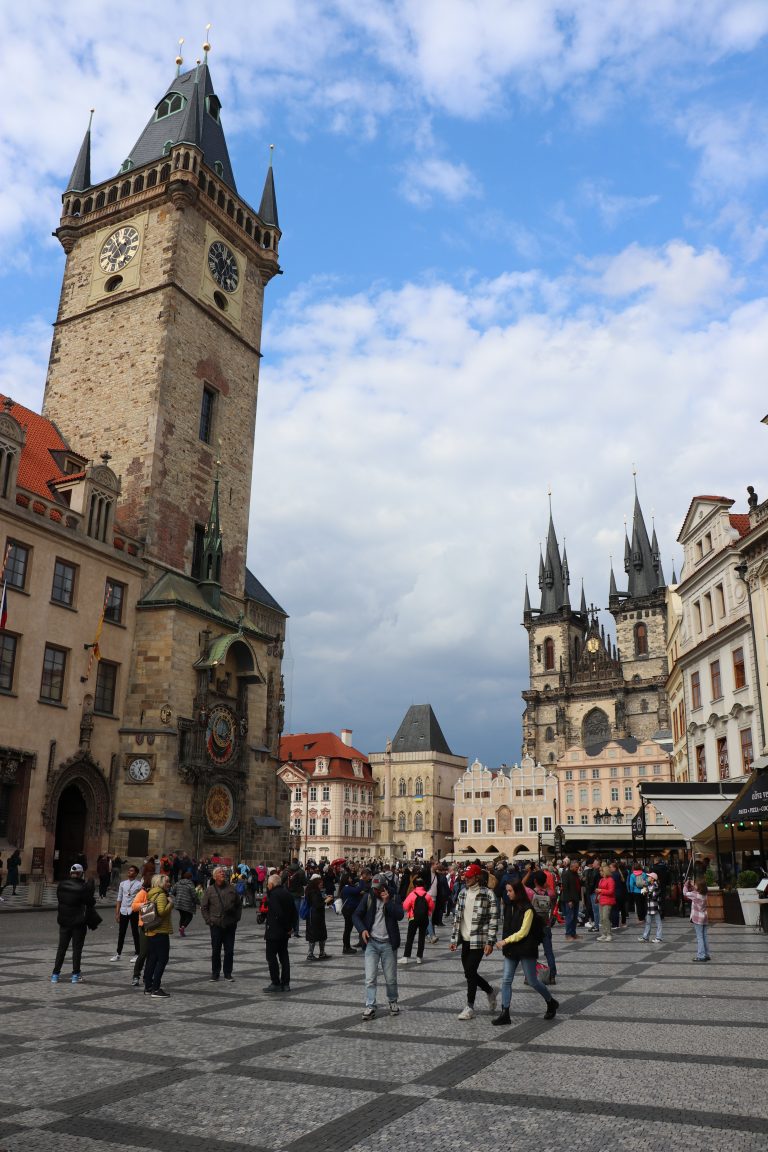
Petrin Park & Lookout Tower
The 63-meter-high Petrin lookout tower was built in 1891 and is located on Petrin Hill on the left bank of the Vltava River and close to the Prague Castle. It looks very similar to the Eiffel Tower and has over the years been used as both an observation tower as well as a transmission tower.
To get to the top of the hill you can take the funicular railway or take the somewhat strenuous 30-minute walk to the top. It is set amongst one of the largest and most attractive parks in the city with well-kept paths where locals meet for coffee or simply to exercise or walk the dog.

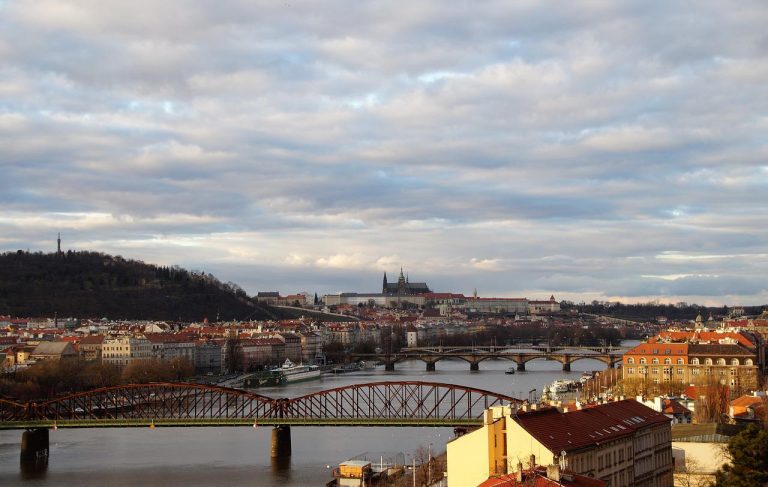
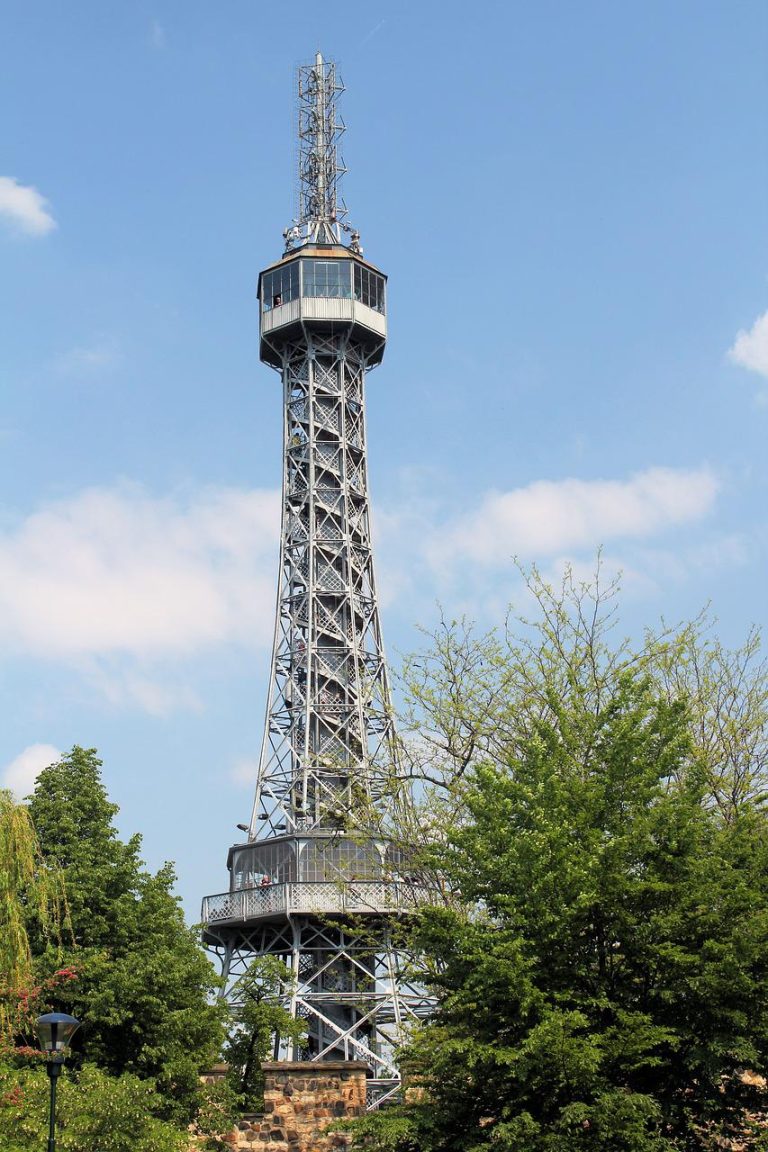
Wenceslas Square & The National Museum
A place I was keen to visit was Wenceslas Square. What I had not realized is that it is actually a boulevard and was originally, some seven centuries ago, known as the Black Horse Market! Today it is a bustling centre home to upmarket shops, hotels, restaurants, bars, nightclubs and in keeping with tradition, market stalls.
At the top of the boulevard dating back to 1818 is Prague’s National Museum otherwise known as the Národní Muzeum. The National Museum’s main building is home to its natural history, geology, palaeontology, archaeology, and prehistory collections. Next door is the National Museum’s New Building.
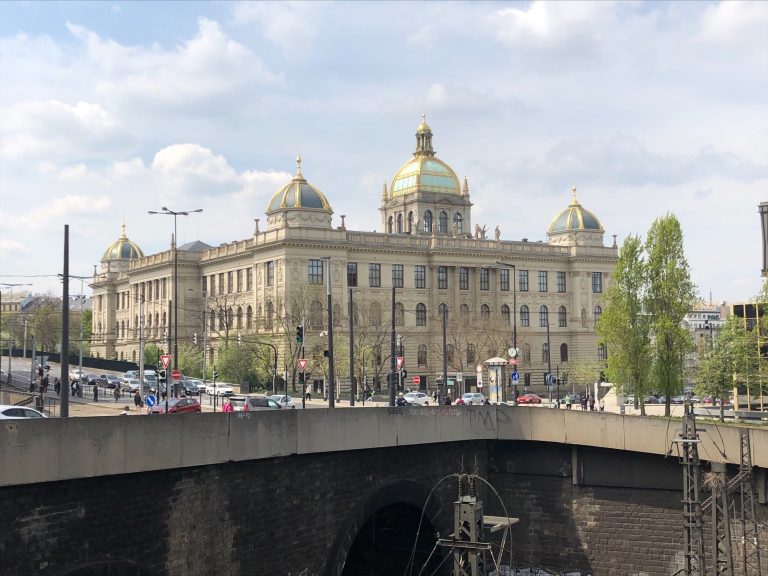
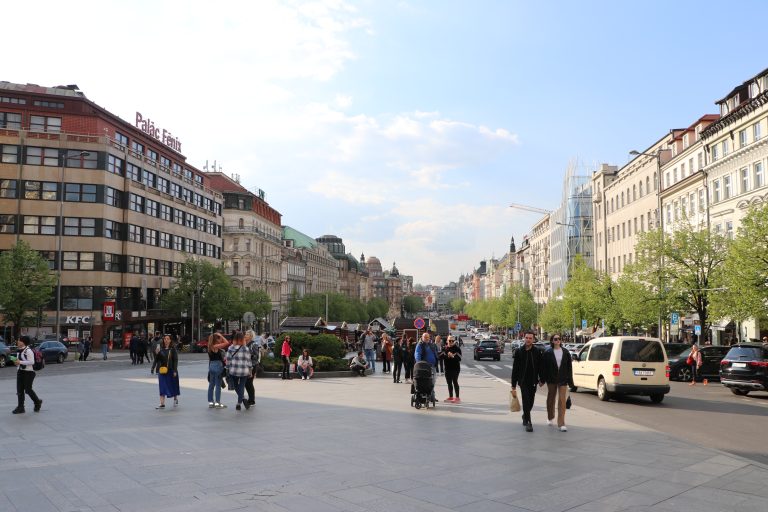
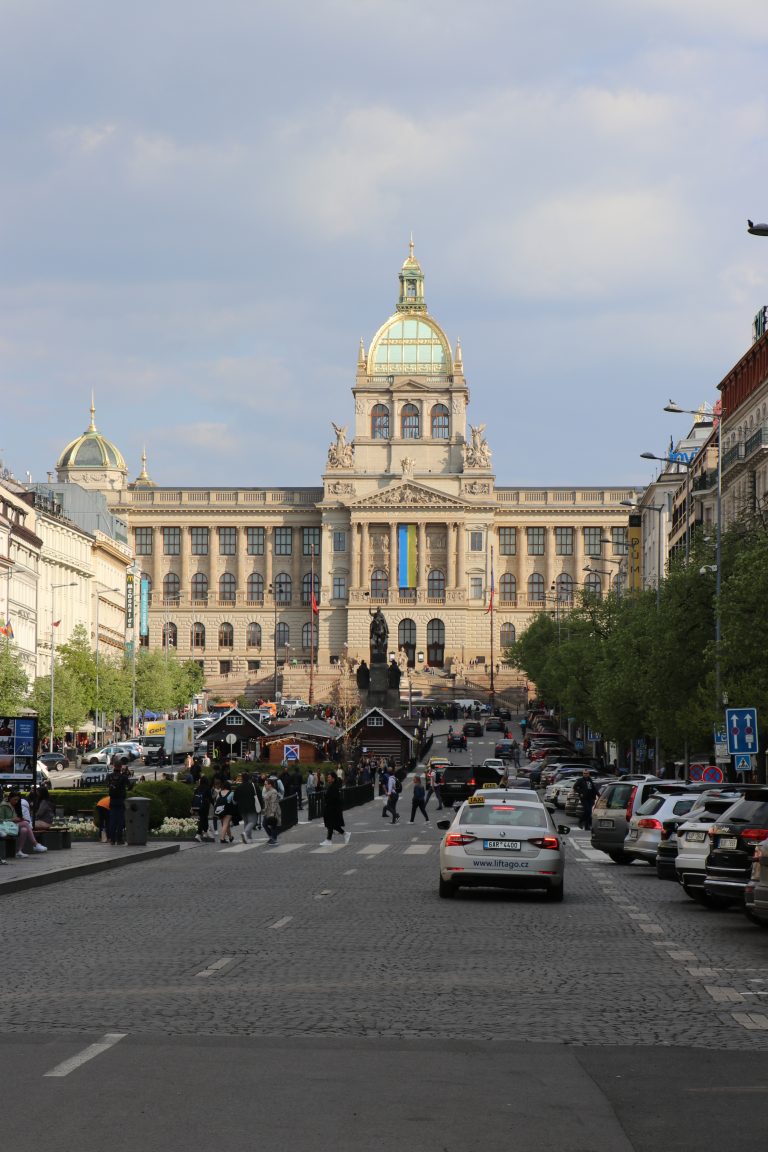
The Slivovitz Museum
Close to the Charles Bridge is the Slivovitz Museum. This homage to the local rocket fuel is described as a 5D experience. I would describe it as an out-of-body experience!
Here you can understand its history, how it is made and of course, you have the chance to try it out. This is an experience that you may forget but for all the right reasons!
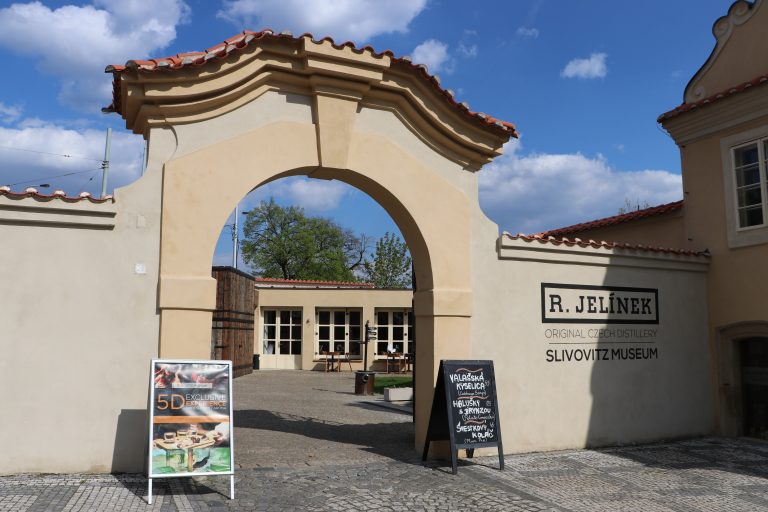
The Peddlecar Museum
In the shadow of the Charles Bridge is the little Peddle Car Museum.
Set over two floors this fun little exhibition showcases over 100 pedal cars across two floors from the 19th and 20th centuries. It’s a place not just for the kids, but for the big kids too.
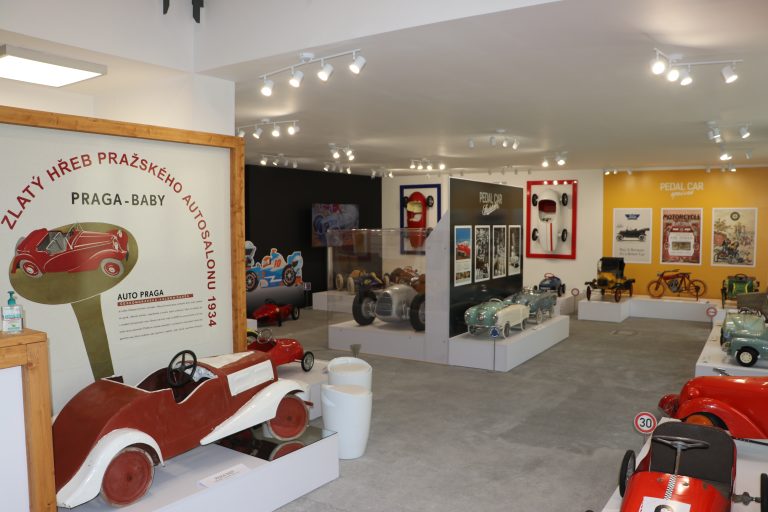
Vinohrady and the Žižkov Tower
When I heard that the 700-foot Zizkov TV Tower was voted the 2nd ugliest building in the world I simply had to see it and guess what…. I loved it!
Designed by Czech sculptor David Cerny the tower has a series of babies with bar codes instead of faces, crawling up the side of the tower. Cerny’s work often poked fun at political norms and sometimes in protest against 1980s Soviet communism. You can see his work throughout the city.
Today there is an observation deck with wonderful views of the city along with a restaurant and at night the tower is illuminated. Despite being a somewhat “marmite” piece of work it has become a very popular attraction.
As the name may suggest, the neighbourhood of Vinohrady has a long history linked to the old royal vineyards. Take some time away from the crowds and wander the streets stopping only to relax in a multitude of classy restaurants and bars serving incredible wines and cuisine.
As you discover this quiet corner of Prague you also find plenty of parks and green spaces, a history of theatre, and many elegant churches. The Jiřího z Poděbrad Square has one of Prague’s most famous churches, the Art Nouveau Church of the Most Sacred Heart of Our Lord.
Stop by Náměstí Míru to admire the neo-Gothic Church of St Ludmila, which also hosts some of the city’s favourite Christmas and Easter markets.
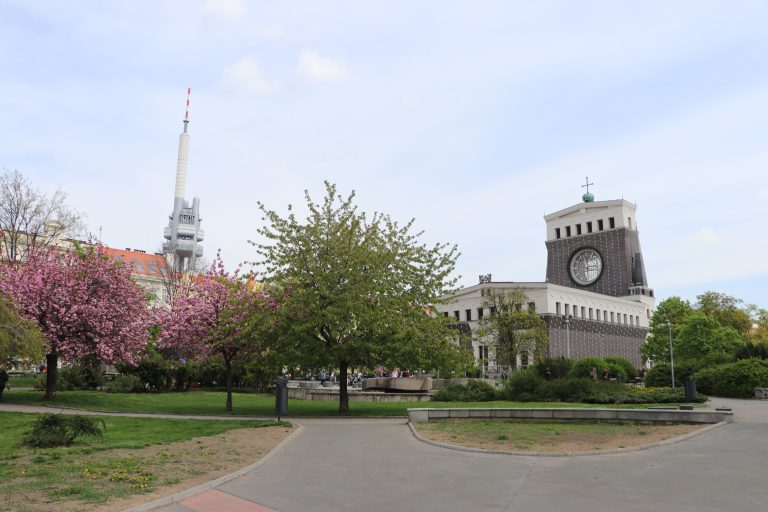
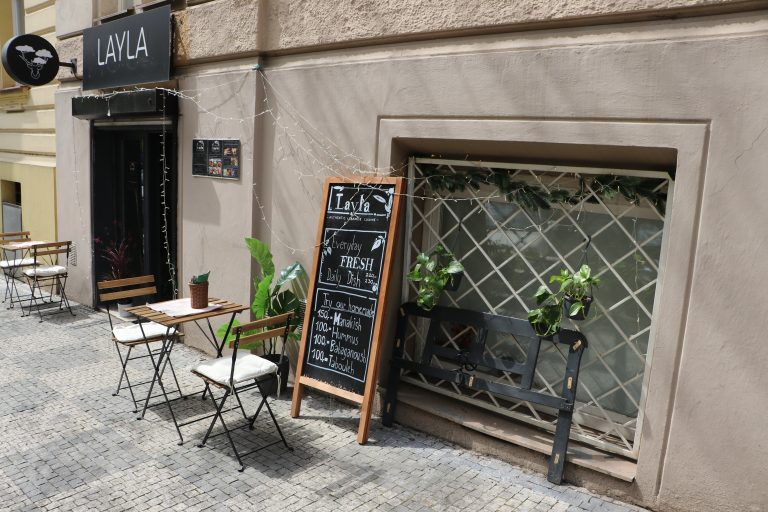
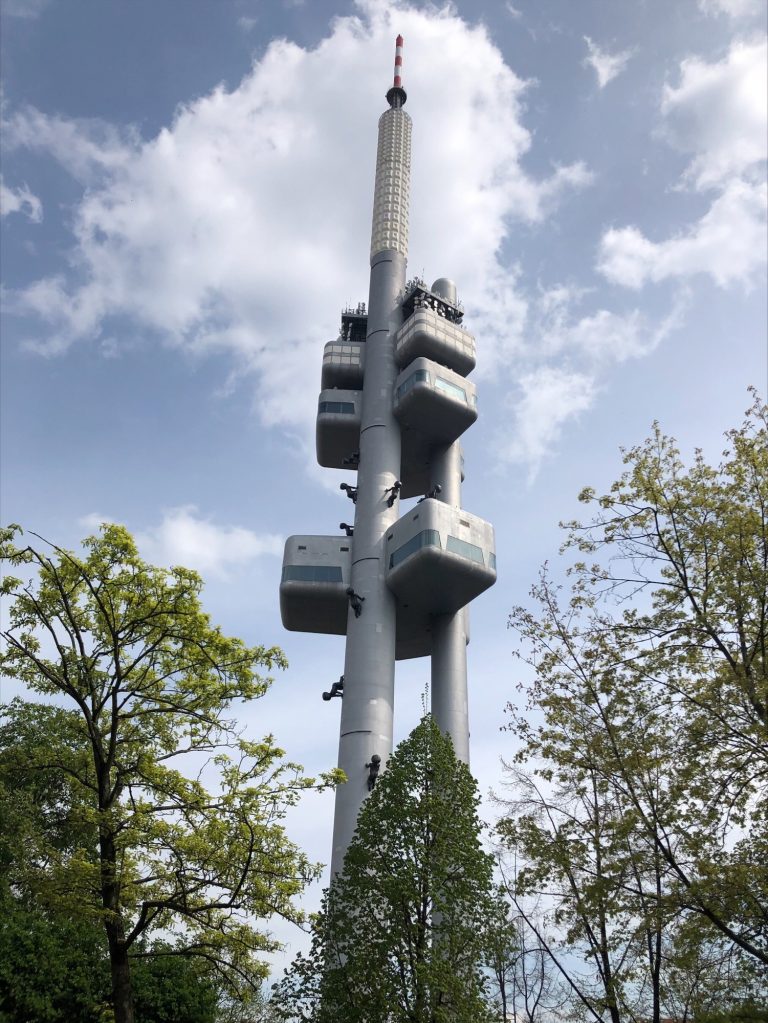
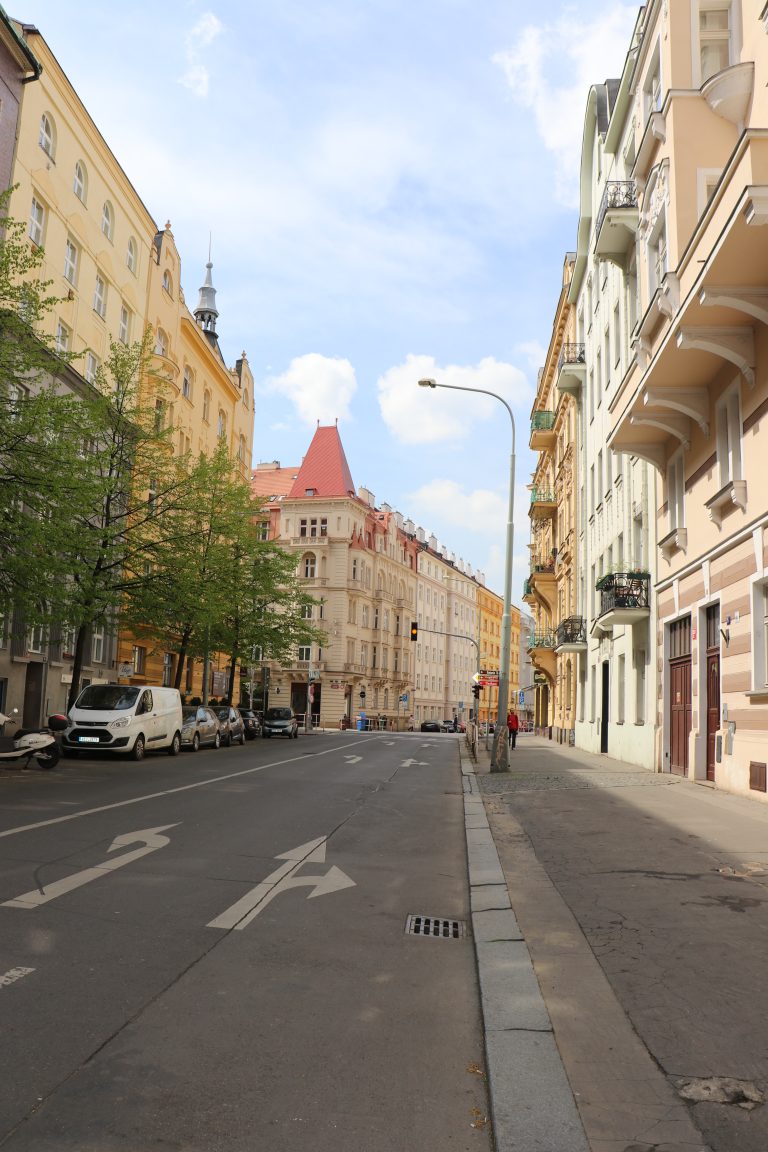
Letna & The Holešovice Art District
If you are looking for the hip cool neighborhood of Prague then head to the area known as Prague 7 via the red metro line and get off at Vltavska or Nadrazi Holesovice.
Letna Park has some incredible views of Prague and these are often enjoyed until the late hours in Letnas Beer Garden Park. However, the real reason to come here is for the beautiful architecture and general carefree vibe. The Krizik fountain in Vystaviste is a popular attraction for its light and music show plus there is the Industrial Palace, an art nouveau masterpiece not to be missed.
Holesovice is full of boutiques, flea markets, and art galleries, and is home to the enormous DOX Centre for Contemporary Art. In the area around the Vltavska metro station, you will find some superb street art, especially at the DOX Centre and along Milady Horakove street.
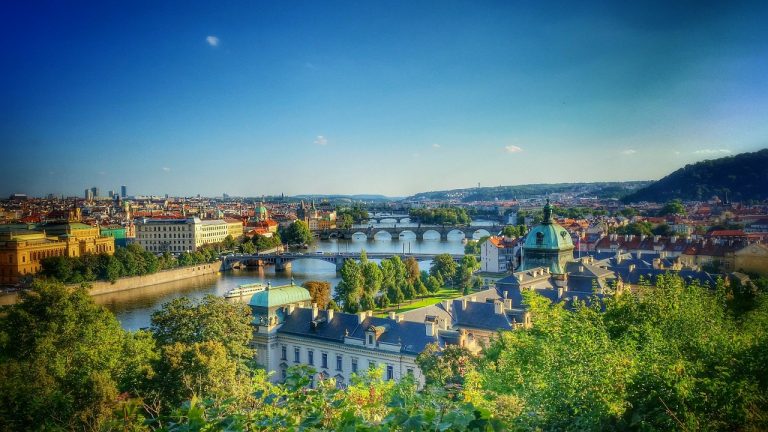
Vyšehrad
If once again you are looking for a slightly less touristy experience of Prague, take the red Metro line to Vyšehrad in the southern part of the city where you will find plenty of peaceful green spaces with more great views of the city and river.
The neo-gothic Basilica of St. Peter and St. Paul is worth a visit along with a visit to the Slavin Cemetery to view the elaborate gravestones. Also here is Prague’s oldest building, the Rotunda of St. Martin.
Food & Drink
The Czech Republic is world-famous for its beer and in Prague, you will not be disappointed with the sheer choice on offer. Perhaps the best way to understand the beer scene is to embark on a Prague beer tour where a local guide will take you to microbreweries and well-known bars serving up some of the best beers in town. There are over 600 bars in Prague so even if you choose not to do the guided tour you won’t find it hard to find a pub. If you want to try some of the local firewater then there is no more popular choice than Becherovka.
The food in Prague is incredible. Svíčková is a beef fillet served with a mix of vegetables while roast pork with dumplings and cabbage (pečené vepřové s knedlíky a se zelím) is also popular. Roast duck is a regular on the menu as is Wiener Schnitzel and Ghoulash which are both a central European dish but here they come with a Czech twist. Prague offers a great choice of soups and sauces. Kulajda is a popular choice – this is a creamy potato soup with mushrooms, dill, vinegar, and a poached egg on top.
For a sweet treat, there is the famous Czech pastry called the Kolache which is made of yeast dough and filled with fruit or less often, cheese. The pastry’s name comes from the Czech word kola which means “wheels” or “round”.
Oh and if you get that urge for a pint of Guinness – the Czechs love a pint of the Black stuff so head to JJ Murphy’s Irish Pub in the Lesser Town for a warm welcome and a nice atmosphere.

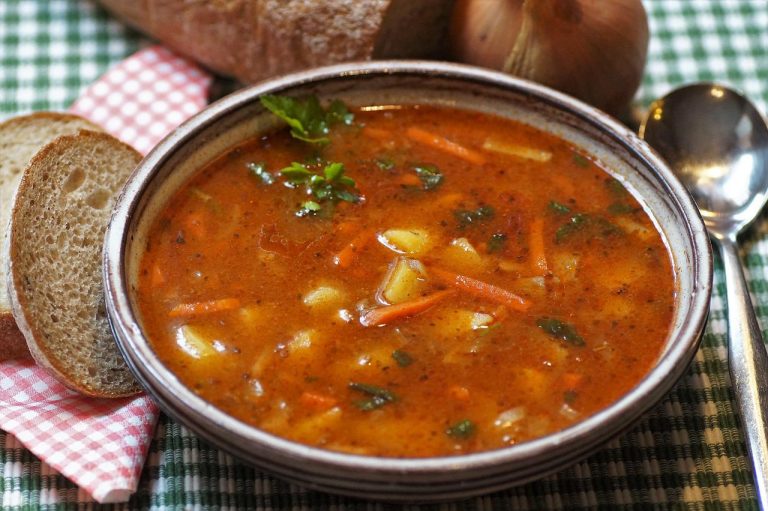
Nightlife of Prague
The evening entertainment in Prague is legendary and there is something for everyone be it dance or techno clubs, rock n roll venues, jazz clubs, theatres or just a good old-fashioned Beer Hall.
The area around Charles Bridge has perhaps the best-known and most popular stylish wine bars, pubs, restaurants, and nightclubs. A couple of quirky-themed pubs I came across was the Robotic Bar in Staré Město where you can enjoy, after ordering on your phone app or at one of the in-house pads, a rather overpriced cocktail made by a robotic bartender. Downstairs is Prague’s very own Ice Pub where what it lacks in atmosphere it gains in the quality of its chilly beverages.
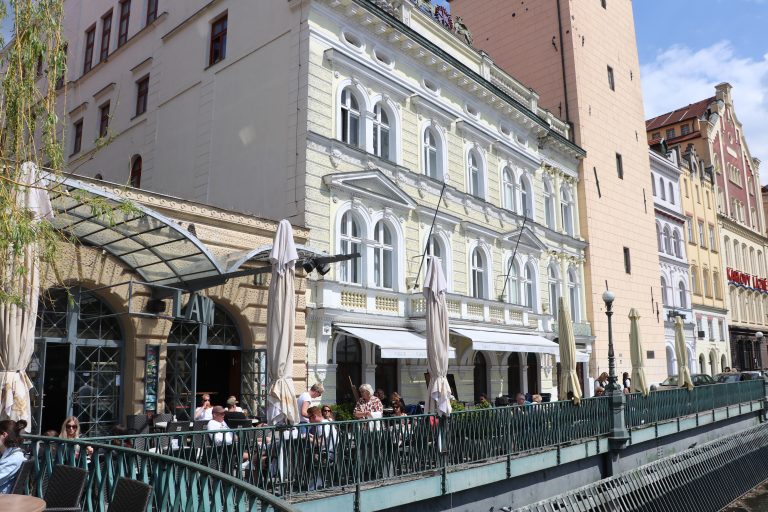
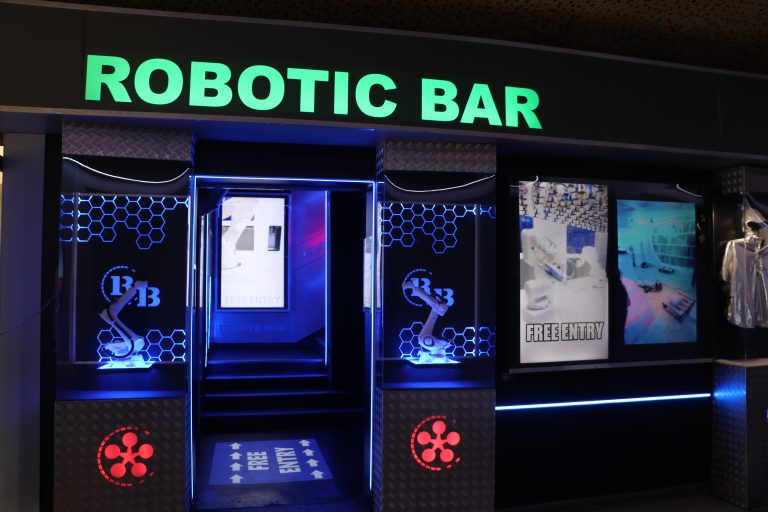
Pre-Bookable Prague Excursions
Summary of Prague
Prague is a stunningly beautiful, safe, and historic city with so much to do. Enjoy wandering along the riverbank and getting lost in the old town streets. Laugh as you discover odd attractions and enjoy people-watching in pretty bars overlooking spectacular vistas. Savour those signature sights and yes OK go on then – take a selfie or two.
Was Prague worth the wait? You bet it was!
Till next time…
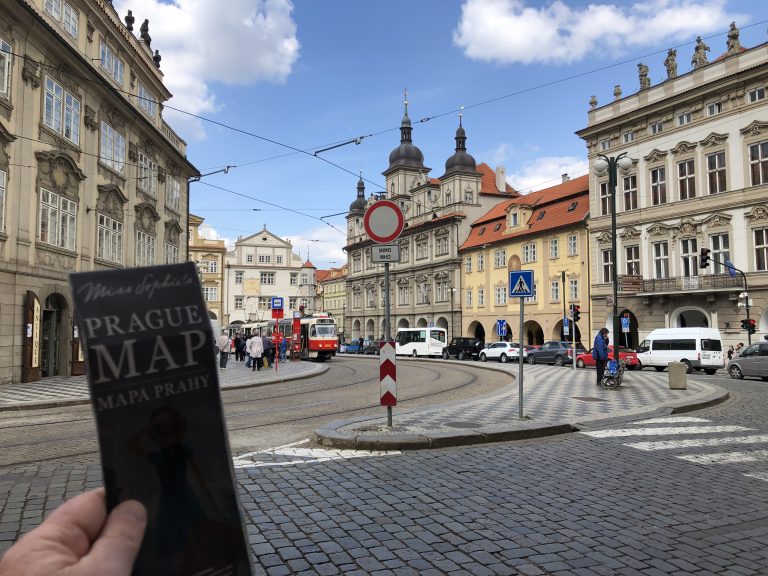
Contact Information
For further information visit the Czech Tourist Office or contact your local travel agent or tour operator.
Another great site to receive information about Prague is the Prof Rabbit Travel Advisor.


